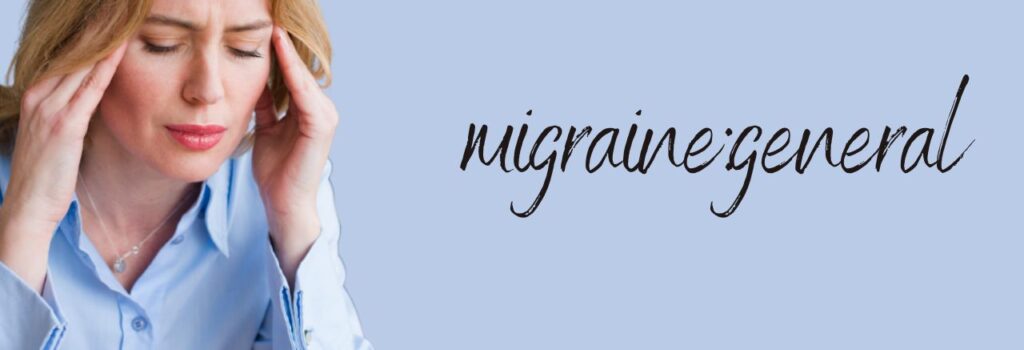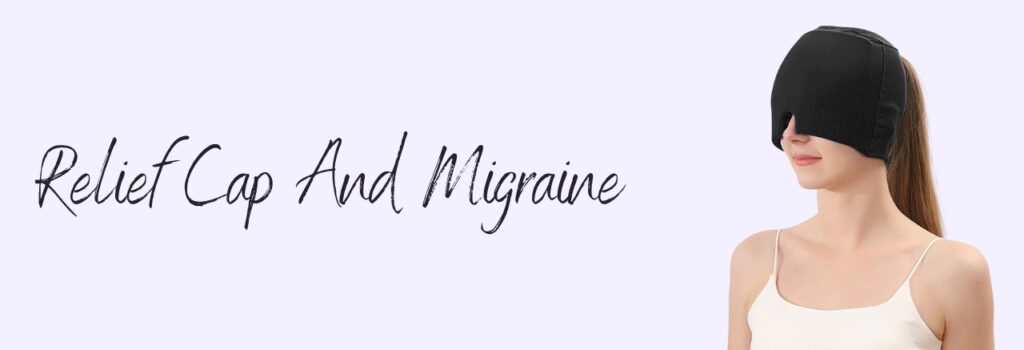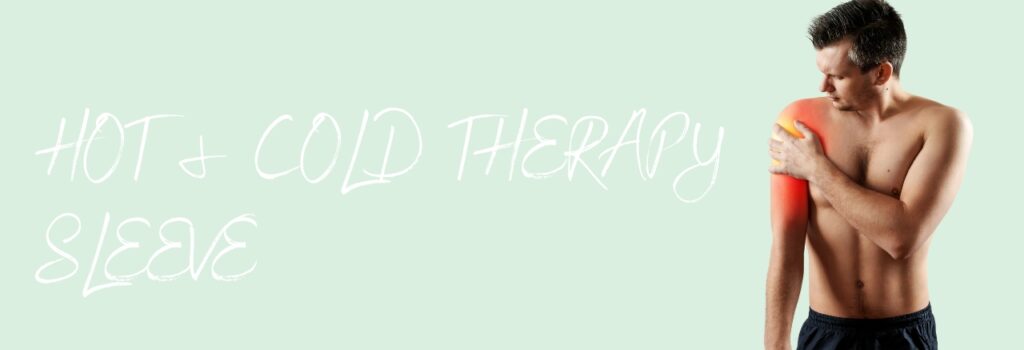Nature
A migraine attack is defined by a set of symptoms, including a headache.
Migraine can be associated with transient neurological symptoms (visual, sensitivity, speech disorders, etc.), forming what is called the aura. This is called migraine with aura.
The characteristics of migraine without aura are:
- The pain occurs by crisis, settling in a progressive way (and not suddenly).
- It lasts from 4 hours to 3 days (if there is no treatment).
- It is often throbbing like “a heart beating in the head”, “hammering” or sometimes “a feeling of tightness, crushing”.
- The intensity of the pain is increased by physical effort (walking, climbing stairs, etc.).
- The pain is most often located on only one side of the head, right or left.
- It is moderate to severe.
- It is associated with nausea, vomiting or annoyance to light or noise.
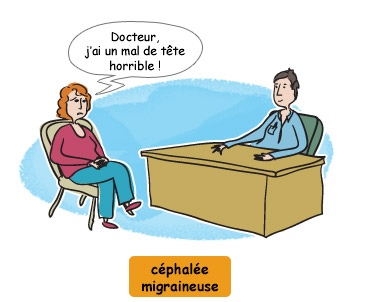
Who is concerned ?
Migraine affects 7 to 8 million people (of which ¾ are women), or about 12% of the adult population and 5 to 10% of children.
20% of women suffer from it. Regardless of age, the prevalence* of migraine is higher in women than in men (4% on average), unlike episodic non-migraine headaches (such as tension headaches) which are almost always equivalent in men and women.
Migraine begins before the age of 40 in 90% of cases. It gradually decreases after 40 years. After menopause, the prevalence of migraine decreases sharply in women.
Chronicity is greater in women (4.18% of the population) than in men (1.62%).
(source: GRIM 2000 study)
* Prevalence: proportion of the population affected by a disease.
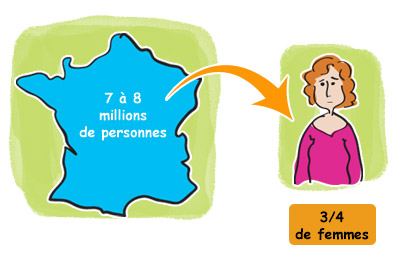
Consequences of migraine
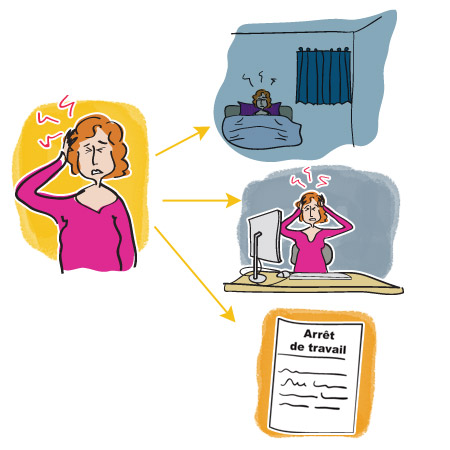
Migraine symptoms make any activity painful and often require patients to lie down in the dark.
Apart from crises, the migraine patient avoids triggering situations as well as the contributing factors that he has identified. These avoidance behaviors alter his quality of life: evening with friends wasted, show canceled…
Migraine has significant socio-economic consequences (work stoppage, decrease in professional productivity).
The consequences generally vary according to the intensity of the pain, the duration and frequency of the seizures and the associated vomiting.
The migraine attack
Migraine attacks are unpredictable. However, premonitory signs are sometimes identified the day before or a few hours before the migraine attack: fatigue or hyperactivity, drowsiness, repeated yawning, irritability, feeling of hunger, euphoria or depressive state, constipation, feeling cold, etc.
After the crisis, well-being is felt, as well as great fatigue sometimes, which can last several days.
The IHS criteria define the migraine character of the attack
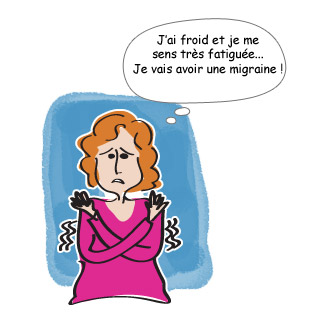
migraine aura
The headache can be associated with transient neurological symptoms (visual disorders, speech sensitivity, etc.), forming what is called the aura . An aura occurs in 10-20% of migraine attacks.
Some of these patients have only attacks with aura, others alternate attacks with or without aura.
Migraine aura is a transient neurological disorder. It usually lasts less than an hour. It’s neither an epileptic seizure nor a stroke.
It is completely reversible. The aura symptoms appear gradually for more than 5 minutes, this is the “migraine walk”. Their appearance is never sudden.
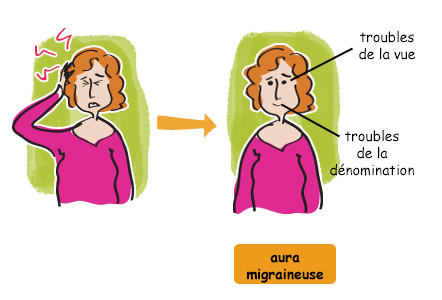
Headache in migraine with aura
The headache can appear either at the same time as the aura, or when the aura disappears, or after a period without any symptoms, aura or headache (free interval) which does not exceed 1 hour.
In migraine with aura, the headache may be migraine or non-migraine or the headache may be absent.
Isolated visual auras are common, other auras are exceptionally isolated.
In case of doubt, the doctor can prescribe an additional examination to determine if he is facing a migraine aura, an epileptic attack or a cerebrovascular accident (CVA). But the aura is neither a seizure nor a stroke.
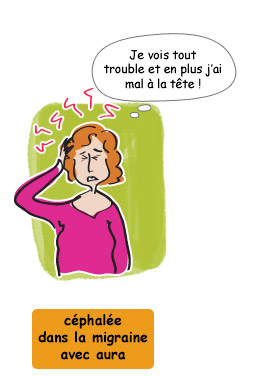
The different auras
Auras can be present in typical forms:
- visual (the most frequent),
- sensitive,
- phasics (naming disorder).
The symptoms, often spectacular, are frequently a source of concern for patients.
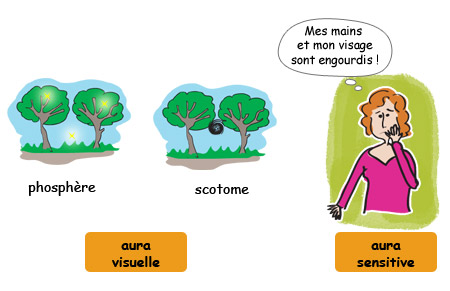
The most common auras are:
- Visual aura
Scintillating scotoma and phosphenes are the most frequent visual manifestations.
Scintillating scotoma: the patient has an area of non-perception surrounded by a very bright and scintillating light fringe (typical sign of ophthalmic migraine).
Phosphenes: the patient sees luminous spots, flashes, flashes or stars.
These signs persist when the patient closes his eyes. - Sensitive aura
Tingling (paraesthesia) or numbness: localized in the fingers, hands, then gaining half of the face on the same side (lip, cheek, tongue). They are only present on one side of the body (left or right) at a time. The extension is reached in about ten minutes.
In the vast majority of cases, the aura is only visual but it can result in a succession of visual signs then sensory signs or even phasic signs resulting in a lack of words or difficulty in expression.
A migraine sufferer may have only an isolated typical aura without a headache following that aura.


